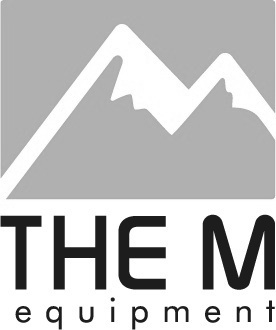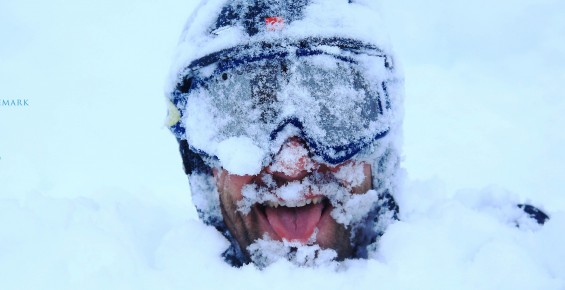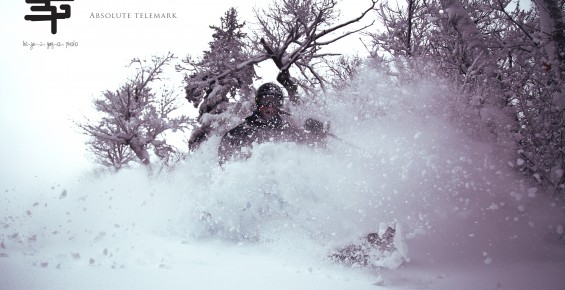Yep,
Oh, by the way, this gear selection is often what you guys ask advice about.
This year, I will talk more about my backcountry telemark set-up since it’s this one that I will change this season. Because of the pandemic, this is probably going to be the biggest season ever for earning your turns, so it might apply to you as well.
I can tell you right away that after a very satisfying set up last year, I will go back to what has worked for me in the last few years.
In this post, I share my touring set up.
Disclaimer: I don’t pay for much of the stuff I receive but I can choose pretty much all I want. And I can surely say whatever I want about the gear I use.
Backcountry is the essence of telemark. Skin up, ski down, I first tried in 1996-97 in the Chic-Chocs.
Equipment has evolved and the 2020s should bring a very exciting era. Today’s telemark gear needs to be compared to alpine touring. This industry has made giant leaps in the last 5–7 years and the question is now can a telemark skier keep up with an alpine tourer. This is one of the reasons a lot of people have switched from telemark to alpine setups.
This has been my quest for the last 10 years, trying to keep up with my alpine friends in the Backcountry. Today’s equipment is almost on par, thanks to the binding manufacturers.
My setup for this season is the Helio 115 (now OK to mount with a telemark binding) with the Meidjo. I will keep my Crispi Evo WC boot for a 3rd year.
I received this setup late January 2020, so I’ve actually skied them quite a bit.
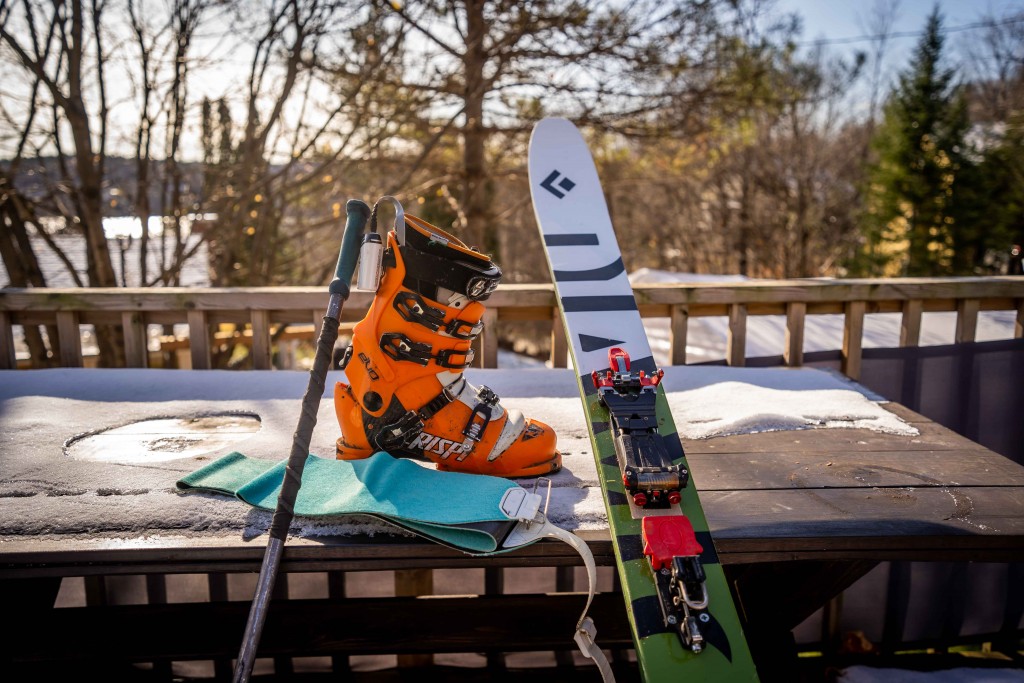
Telemark GEAR
Here is what I use and also some alternate choice I think are good options.
Binding
Because of the NTN, you have to choose to go 75mm or NTN before anything else when you build up your touring kit.
If you go 75mm, I think the Voile Switchback is your only real option. This binding is light, provide a free pivot and the feeling of the downhill will satisfy all the 75mm lovers out there.
If you go NTN, you definitely have to go with a TTS like binding or as Pierre Mouyade, inventor of the Meidjo, calls this binding family: TTN. Telemark Tech Norm
Those bindings are the go-to options for touring. I suggest you choose from the original TTS, the Lynx or the Meidjo.
Pins hold the front of the boot, giving the best ROM (Range Of Movement) and resistance-free stride. This alone makes telemark able to keep up with the alpine tourers.
If you go with a TTS like binding, you will have the freedom and Range Of Movement (ROM) to hike uphill like any alpine tech binding.
All we are missing is the ROM of modern alpine touring boots. I’ve heard that Scarpa is working on a new NTN boot that should provide this but it’s not yet ready.
Still the combo of boots, binding and ski makes for a very decent kit to enjoy the backcountry. And I will say that it’s never been better.
I chose the Meidjo. I will change from the 2.1 to the 3.0 when I receive them. Notice that I have the Alpine Heel Set.
Two years ago I skied a 50-degree chute north of Whistler-Blackcomb. Conditions were perfect, 10 cm of fresh snow, avalanche hazard was low, stability tests were negative. The snow was somewhat dense, coastal like. I don’t get the chance to ski couloirs like that in the winter very often. So I charged the first 10–15 turns, tele-skiing in the wider funnel-like entrance. The couloir then narrowed and the center had slufted down. The 10 cm turned into trashed, irregular, firm snow in the center and soft, dense on the sides. It was really hard to keep my balance between the transitions from the snow sides to the center hard pack irregular snow. Skiing down suddenly became a real life or death experience. I tried a few turns, alpine skiing without locking my heel. It was even harder as I entered the sides, I was losing balance forward. I tried a few turns telemark skiing and the center of the couloir was a real challenge to hold the edge in this super steep couloir. Long story short, I stopped on the side, made myself a nice platform and locked my heels in the Alpine Heelset. I skied the rest of the couloir not in an elegant way but felt a lot safer than the few turns I had just made.
On the pros, the Meidjo is the most complete binding for me.
- The skiing is just great. Solid laterally, it transfers power like crazy.
- Its tension is highly adjustable to get the telemark feeling you want. It won’t beat the super stiff Freeride or other full frame binding like the Outlaw X or the BMF but it can be stiff enough to race with.
- There is a release system!!! And the release system is reliable. It’s not 100% nor are any alpine bindings.
- The step-in is quite easy (improved on the 3.0 – can’t wait to try)
- The combo with the alpine heelset is still releasable. And it keeps the same release values.
- It’s very easy to go from telemark to ski and back. This means that I can telemark most of the time but if I feel that I need it, I can alpine easily.
The Cons:
- The walk mode is not the most user-friendly.
- Bindings are prone to icing in the second heel cup, it’s easy to get rid of it but it builds up in spring conditions
- Not the easiest binding to install
- The brakes are not for me, just too easy to break (new version this year so this could change.
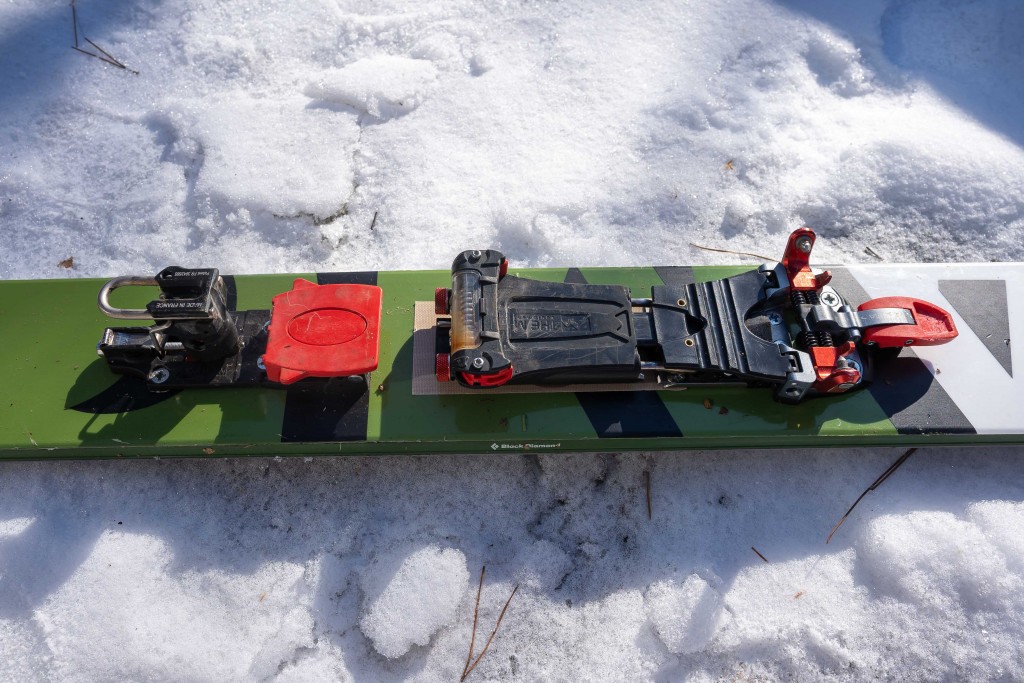
Boots
This is the missing link. While today’s boot are durable and perform very well on the down, we don’t have the same modern walk mode as alpine tourers. Their boots are significantly better for climbing. You have two routes from here in my mind:
Stay in 75mm boots and choose, light, flexible boots that will provide ease of walking. You will be missing the power to drive the big modern fat skis
Go NTN and use stiffer, higher boots. Here, you will carry more weight, have less ROM. Your stride will suffer but the way down is going to be as good as any modern alpine tourers.
Seventy-five millimeters boots are getting harder to find but Scarpa T2, Crispi XP are very good options.
My Choice: Crispi Evo WC for its stiffness, the fact that it has the tech toe inserts and the heel tech inserts.
The Pros:
- wrap around liners for stiffness
- has the tech toe inserts and the heel tech inserts.
- Very durable [look at the sole after two full seasons.
- just a solid driver
On the cons:
- heavy boots compared to alpine touring equivalent (like all telemark boots in this category)
- old walk mode mechanism compared to alpine touring equivalent (like all telemark boots in this category)
- clips are not the easiest to undo. This is not a deal breaker, just something to get used to.
- The liner is not the warmest.
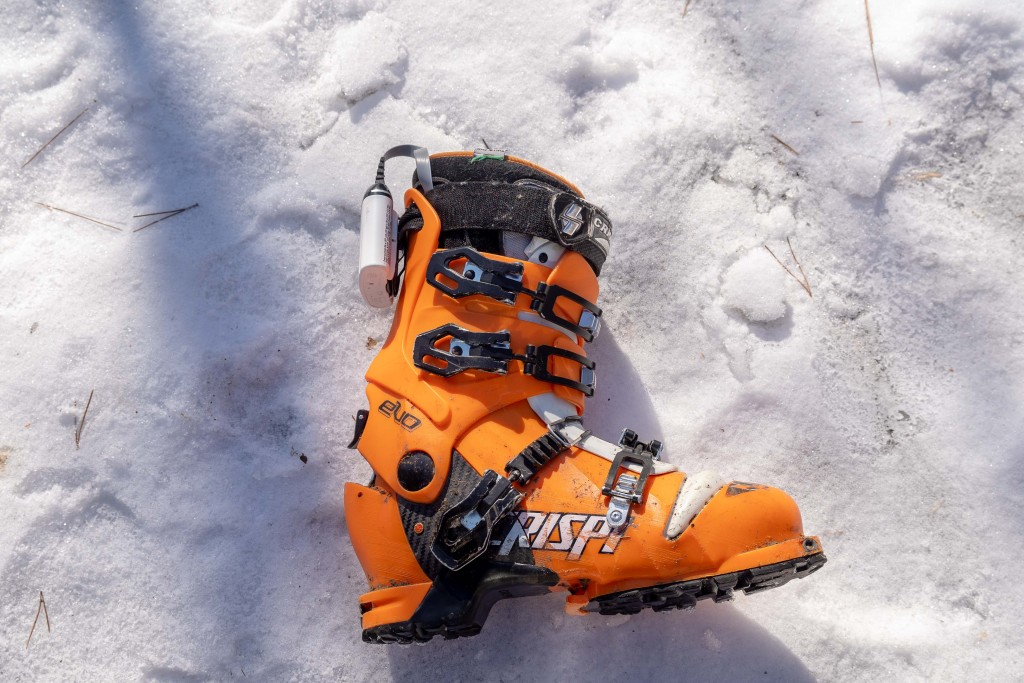

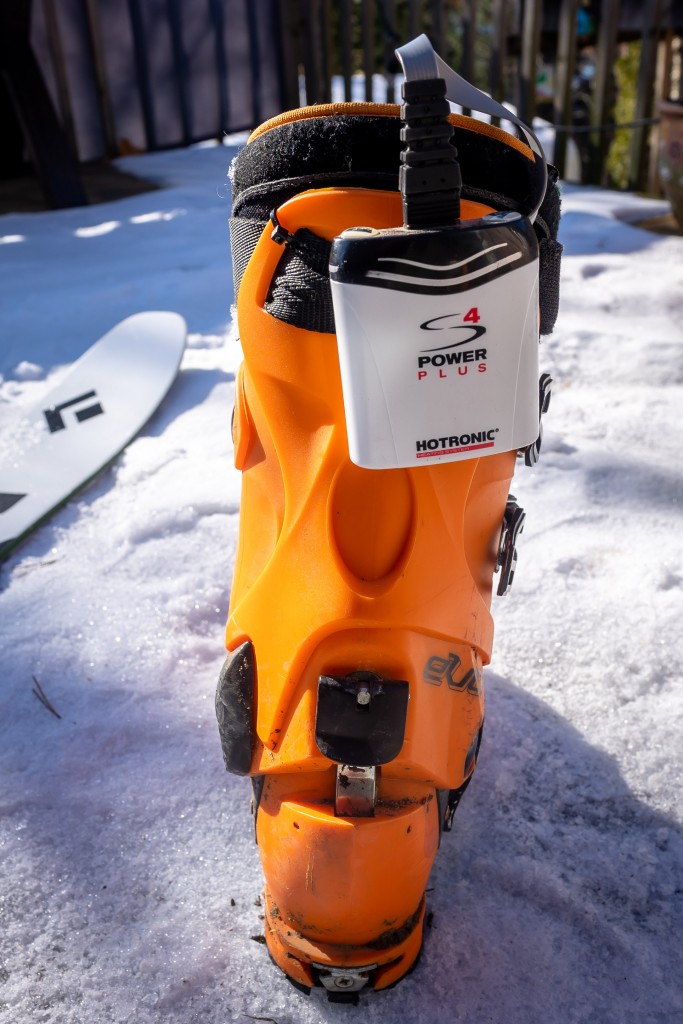
Skis
The Helio 115 are my go to this season
Last year I was on the Black Diamond Helio 105 with the Lynx binding.
I really liked the combo and it’s one of the lightest setups I ever had.
For me the 105 is a very polyvalent ski that I brought guiding and ski patrolling, inbounds and backcountry. Of course you need snow for this ski to be fun but I liked how skiable it was in other conditions. If you want one ski, this could be it.
This year, I will go back with a wider ski. The Helio 115. Good news the new Helio revamped line-up is now telemark recommended. [BD actually removed the “not recommended for telemark” tag.] This ski is just a great size for powder. I like to guide with it, it floats, it’s playful, it’s just an incredible ski that gives me the most fun.
105 was a bit too skinny at times, and I just didn’t have the same fun. It worked great, but not as fun. It’s the old saying, “Jack of all trades, master of none.”
Because I have a few options to choose from, I want the big boy in the line-up for 2020-21.
The Lynx binding by 22Design is also a great choice that I strongly recommend. Good value, simple design, light, efficient. Step in was not the best for me but I learned that 22Designs have changed a toe piece since my version (I think I had a pre-production version). You can look at my full review on YouTube if you wish.
I will still ski a lot more set-ups like the Bishop’s 100 mm Chedi and their super good binding, the BMF, a few racing skis with the Freeride, a few older 75mm setups.
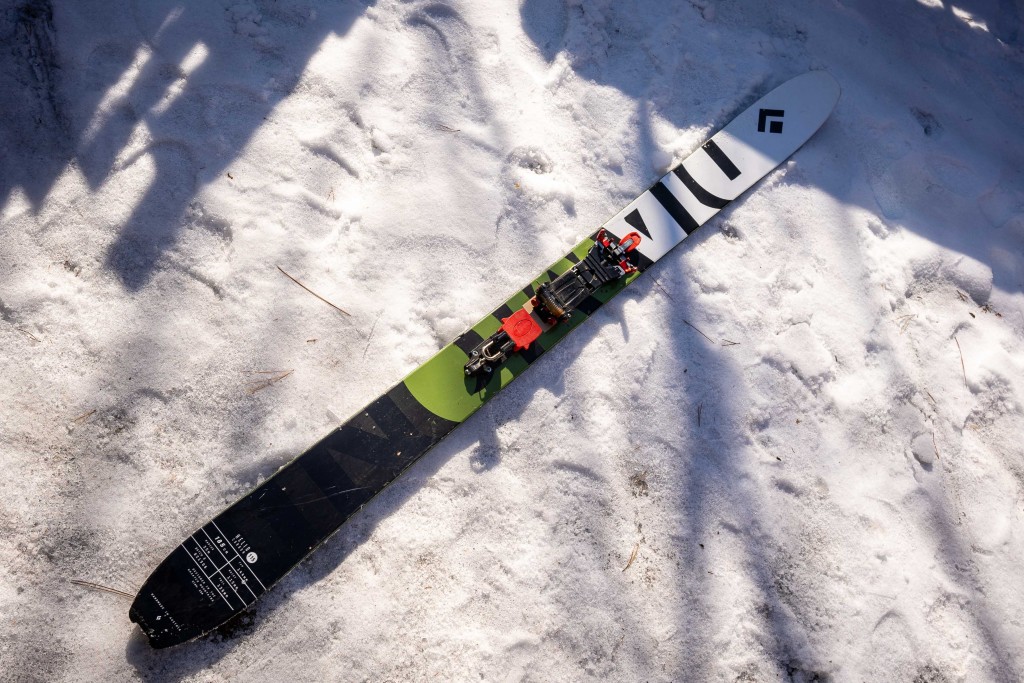
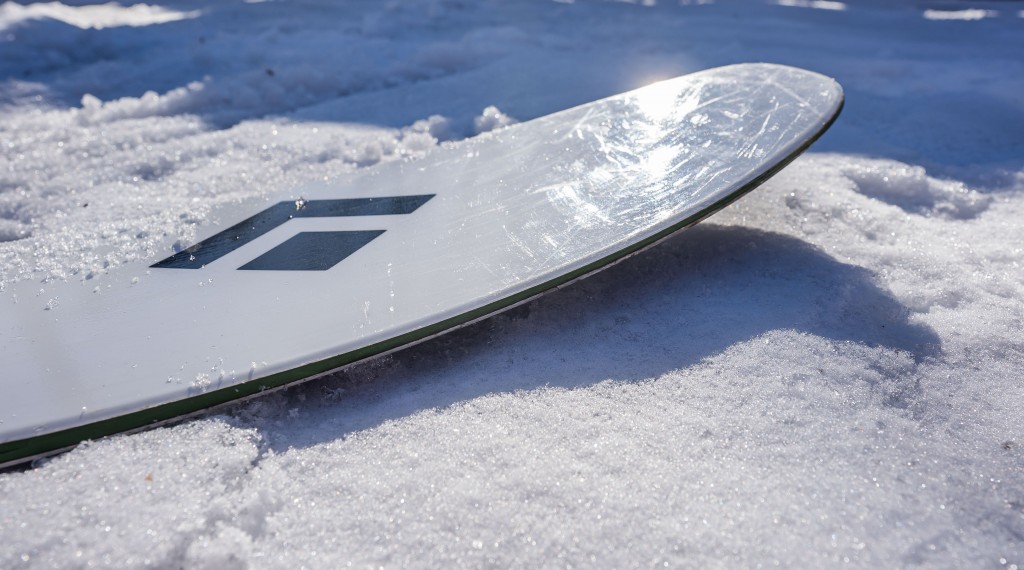
Skins
I have used exclusively Black Diamond skins (and Ascension skins prior to that).
In 20+ years, I’ve had maybe 15 to 20 different pairs.
My go-to are the GlideLite Mix.
They’re just a good combo of lightness, placability and grip. These are the important factor for me. Oh and one super important quality is to be able to unglue the skins when they are packed glue on glue.
Last year, because of limited availability when I got my new Black Diamond Helio 115 at the end of January, I had to go for something new.
Skins are a simple product when it works well but it’s a real pain when it doesn’t
I bought a set of Pomoca Pro S-Climb skins.
Pros:
So far, I like them. It’s about the same as the Black Diamond GlideLite but with a better glide. Not a great difference, but noticeable.
Cons:
There are two metal wires that comes in the box. The White is not strong enough, they bent on me and then the modified shape affected how well they stayed in place.
They could just fall off the skins. I changed for the other all gunmetal ones and the problem was solved.

I will probably add a set up in December or January. I will probably go with a 22Design binding and a more biffy setup.
Not sure what to get? you can look at my Modern Telemark Ski Selection and Problems post coming up soon
Join Absolute Telemark



